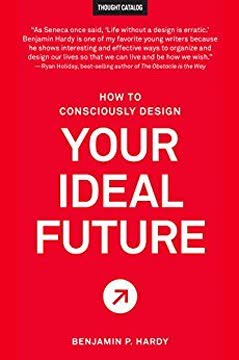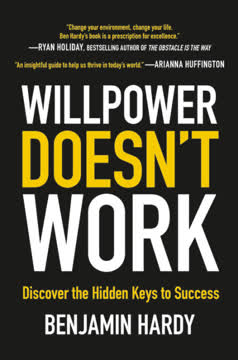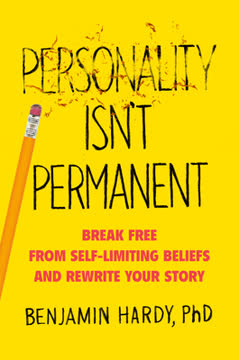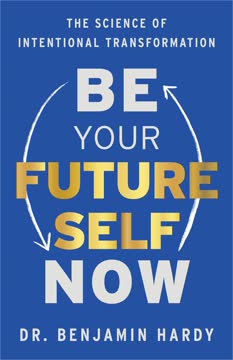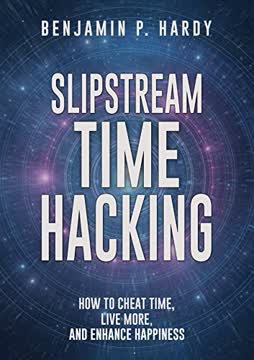Key Takeaways
1. Hope in Your Future Gives Meaning to Your Present
Without hope in your future, your present loses meaning.
Purpose is essential. Viktor Frankl's experiences in concentration camps demonstrated that those who lost hope in the future quickly succumbed to despair and death. Hope, in this context, isn't just wishful thinking; it's a tangible and specific goal that provides meaning and direction. Without a clear purpose, the present becomes unbearable, and individuals lose their will to live.
Hope as the will and the way. Hope is comprised of both the will to achieve a goal and the belief that there is a way to achieve it. High-hope individuals are flexible and resourceful, finding multiple pathways to reach their goals, while low-hope individuals tend to stick to one approach and give up when faced with obstacles.
Cultivating hope. To cultivate hope, one must have a clear and specific goal, believe in their own agency to influence outcomes, and possess the ability to envision multiple pathways to success. This proactive approach transforms hope from a passive wish into a powerful driver of action and resilience.
2. Your Past Narrative Shapes Your Future
Everyone has a plan until they get punched in the face.
Past as a story. The way you frame your past experiences significantly impacts your present and future. A negative narrative can lead to reactive, avoidance-oriented goals, while a positive reframing can fuel growth and purpose. Your past is not a fixed entity but a story you can revise.
Reframing for growth. Emotional health involves both a positive past and an exciting future. Reframing past events in a positive light, even the most challenging ones, allows you to learn from them and integrate them into your personal growth. This process transforms pain into a catalyst for purpose.
Gain vs. Gap. Transforming experiences into personal growth involves adopting a "gain" mindset, focusing on what you've learned and how you've grown, rather than dwelling on the "gap" between your expectations and reality. This proactive approach empowers you to own your experiences and shape your future.
3. Your Environment Shapes Your Goals
You’re the average of the five people you spend the most time with.
Environmental influence. Your environment, including the people you surround yourself with, significantly influences your goals and behaviors. Unconsciously, you adopt the expectations and norms of your surroundings, highlighting the importance of being mindful of your context.
Mindfulness and choice. Mindfulness involves becoming aware of how your environment influences you and consciously choosing to align with your Future Self. This requires actively seeking out new perspectives, experiences, and people who embody the qualities you aspire to develop.
Transformational relationships. To align yourself with specific people, you’ll want to be transformational and not transactional in your mindset. In transformational relationships, there is no keeping score. There’s a genuine desire to help and support each other. The purpose and approach of the relationship is transformation, which focuses on giving, gratitude, and growth.
4. Connection to Your Future Self Improves Present Decisions
The idea of long-term planning is a relatively new concept from a human evolution standpoint.
Empathy for your Future Self. Building a connection to your Future Self requires seeing them as a different person with different perspectives and priorities. This empathy allows you to appreciate how your current actions impact their well-being and make wiser decisions in the present.
Investing vs. Costing. Every action you take is either an investment in or a cost to your Future Self. Short-term rewards that lead to negative long-term consequences are costs, while long-term reward behaviors are investments. The more you invest, the clearer and more vivid your Future Self becomes.
Making your Future Self vivid. Make your Future Self vivid and detailed by writing a letter from your Future Self to your current self. Choose whatever time frame you want. As you practice imagining your Future Self, you get better and clearer at being connected with them.
5. Big Goals Trump Urgent Battles
By our nature as rational, conscious creatures, we cannot help but think of the future.
Short-term vs. long-term focus. Most people are caught up in short-term goals and urgent battles, limiting their ability to think strategically about the future. To escape this cycle, it's essential to lift your gaze and prioritize important, long-term goals over immediate demands.
Prioritizing the important. Eisenhower said, “I have two kinds of problems: the urgent and the important. The urgent are not important, and the important are never urgent.” By putting first things first, you create space to think beyond your current context and invest in your Future Self.
Thinking bigger. Elevate what you think you can do. Rather than asking, “How can I make $100,000 this year?” ask, “How can I make $10,000,000 this year?” Different questions spark innovative thinking and new angles.
6. Action Beats Inaction
It is not the critic who counts; not the man who points out how the strong man stumbles, or where the doer of deeds could have done them better.
Entering the arena. The biggest threat to your Future Self is staying on the sidelines, paralyzed by analysis and fear. It takes courage to enter the arena, face the realities of the situation, and learn from your failures.
Learning through doing. You cannot deliberately practice on the sidelines. When you’re not in the arena, you’re failing by default. The longer you hesitate to enter the playing field, the longer you delay the essential learning curve.
Embracing reality. Being in the arena means you’re finally facing and embracing reality. In the arena, you’re no longer afraid of reality because it has become your instructor. Eventually, as your Future Self you’ll be able to shape reality.
7. Success Can Breed Failure
Success Disease makes people begin to forego to different degrees the effort, focus, discipline, teaching, teamwork, learning, and attention to detail that brought ‘mastery’ and its progeny, success.
The clarity paradox. Success can lead to more options and opportunities, which can diffuse efforts and undermine the very clarity that led to success in the first place. This highlights the importance of continually updating your vision and filtering out nonessential distractions.
Maintaining focus. The more successful you become, the more lesser goals present themselves. The more opportunities and quick wins come your way, the greater the need to continually update your vision to filter out the 99 percent of nonessential traps to your energy and focus.
Moral code. To thrive in a societal group, individual members must obey a moral code that supports the group interests over individual interests. This can be difficult for people whose individualistic evolution runs deep. Without religion to provide meaning for living a moral code, people have less reason to do what’s best for the group.
8. Your Future Self Drives Your Present
It is absurd to suppose that purpose is not present because we do not observe the agent deliberating.
Teleology and purpose. All human behavior is goal-driven, the means to some end. The goal or end is the cause of the behavior. Health, for example, is the end of walking, losing weight, seeing the doctor, and eating well.
Intelligent design. Every human creation you see is the byproduct of intelligent design. Someone had an idea for creating something, and turned their idea into a physical form. This process is trial and error, but driven by a goal.
Definite vs. indefinite attitudes. People can expect the future to take a definite form or they can treat it as hazily uncertain. If you treat your future as something definite, it makes sense to understand it in advance and to work to shape it. But if you expect an indefinite future ruled by randomness, you will give up trying to master it.
9. Your Future Self Will Be Radically Different
Human beings are works in progress that mistakenly think they’re finished.
The end-of-history illusion. People tend to underestimate how much their personalities will change in the next decade, assuming their Future Self will be largely the same as their current self. This "end-of-history illusion" limits their ability to envision and create a different future.
Growth vs. fixed mindset. People with a fixed mindset believe their basic qualities are fixed traits, while those with a growth mindset are more interested in learning and growing. Embracing a growth mindset allows you to love your current self while appreciating how temporary your current perspectives and attributes are.
Embrace change. Knowing you can and will change enables you to love your current self. You’re less rigid about how you see yourself. You don’t need all the answers right now. You don’t need to prove your current capability or worth.
10. Your Future Self is the Ultimate Consequence
Time will be your friend or your enemy; it will promote you or expose you.
Paying the piper. Everything you do has a consequence, for better or worse. Your Future Self is the exaggerated result of your current decisions. You can't escape your Future Self, and you can't escape paying the Piper. The only choice you have is, when will you pay the Piper, and how much?
Investing vs. costing. Everything you do can be categorized as either a cost to or an investment in your Future Self. Costs put your Future Self deeper in debt, while investments make your Future Self wealthier.
The compound effect. The compound effect refers to how small changes compound into dramatic results. It’s the ripple effect you get from the choices you make. In life, you not only reap what you sow, you reap more than you sow.
11. Vivid Future Self Accelerates Progress
What preoccupies us is the way we define success.
Clarity and measurement. The more vivid, detailed, and measurable your Future Self, the easier it is to become your Future Self. Effective progress comes with a combination of measurable metrics, a vivid vision of your Future Self, and clear mile markers. Without these elements, people wander.
Selective attention. Clarify what you’re looking for, and you’ll see it everywhere. What was once hidden in plain sight will become radically obvious. You see what you’re looking for.
Strategic focus. A massive threat to your Future Self is simply that you’re thinking way too small. Multiply your vision 10-times or 100-times larger. You’ll be forced to understand the principles, rules, and strategies of living at a higher level.
12. Your View of God Impacts Your Future Self
Our deepest fear is not that we are inadequate. Our deepest fear is that we are powerful beyond measure.
God and self-perception. Whatever views, or lack of views, you have of God will directly impact your views of your own Future Self. Whatever view you hold of God largely impacts your views of yourself, your nature, your potential, and your trajectory.
Theosis and potential. Being a literal child of God means there is a reason for being here. Life isn’t random. We came from God and chose to come here for development, education, and experience. Moreover, being a literal child of God means that within us is the inherent capacity to become like God, in all ways.
Freedom and respect. God loves and respects us irrespective of what we choose. Each person should be fully respected in what they choose to believe about God, about life, and about themselves. We are all extremely ignorant and limited in our current perspectives, and our Future Selves will see things from a more elevated state.
Last updated:
FAQ
1. What is "How to Consciously Design Your Ideal Future" by Benjamin P. Hardy about?
- Focus on Future Self: The book centers on the concept that your life is primarily shaped by your vision of your Future Self, not your past.
- Science and Stories: Hardy combines cutting-edge psychological research with real-life stories (like MrBeast and Viktor Frankl) to illustrate how prospection (thinking about the future) drives behavior.
- Practical Framework: The book provides a structured approach—outlining threats, truths, and actionable steps—to help readers consciously design and become their ideal Future Selves.
- Immediate Application: Readers are encouraged to start living as their Future Self now, using tools like time capsules, letters, and vivid visualization.
2. Why should I read "How to Consciously Design Your Ideal Future" by Benjamin P. Hardy?
- Shift from Past to Future: The book challenges the traditional belief that the past determines your present, showing instead that your envisioned future is the true driver.
- Actionable Steps: It offers a clear, science-backed roadmap for personal transformation, not just theory or motivation.
- Overcome Common Pitfalls: Hardy identifies and helps you avoid the seven main threats that keep people stuck in unfulfilling patterns.
- Real-Life Examples: The book is filled with inspiring stories and practical exercises, making the concepts relatable and easy to implement.
3. What are the key takeaways from "How to Consciously Design Your Ideal Future"?
- Your Future Drives Your Present: The future you imagine for yourself shapes your current actions, decisions, and mindset.
- Connection is Critical: The more vividly you can see and emotionally connect with your Future Self, the wiser and more motivated your present decisions become.
- Eliminate Lesser Goals: Success requires focus—clarify your top priorities and remove distractions or conflicting objectives.
- Invest in Your Future Self: Every action is either a cost or an investment; consistent, small investments compound into massive results over time.
4. What is the "Future Self" concept in Benjamin P. Hardy's book, and why is it important?
- Definition: Your Future Self is the person you will inevitably become, shaped by your current choices, habits, and vision.
- Psychological Foundation: Modern psychology (prospection) shows humans are unique in their ability to imagine and plan for multiple possible futures.
- Impact on Behavior: The more connected you are to your Future Self, the more likely you are to make decisions that benefit you in the long run.
- Key to Happiness and Success: A clear, hopeful vision of your Future Self gives meaning to your present and motivates growth, resilience, and wise choices.
5. What are the "7 Threats to Your Future Self" according to Benjamin P. Hardy?
- Lack of Hope: Without hope or a compelling vision for the future, the present loses meaning and motivation fades.
- Reactive Past Narrative: Letting your past define you or framing it negatively limits your future possibilities.
- Environmental Unawareness: Being unaware of how your environment shapes your goals leads to random, unintentional evolution.
- Disconnection from Future Self: Not empathizing with or investing in your Future Self results in short-sighted, myopic decisions.
- Urgent Battles & Small Goals: Focusing on immediate, minor tasks keeps you stuck and prevents big-picture progress.
- Not Being in the Arena: Avoiding action or staying on the sidelines leads to default failure and missed learning opportunities.
- Success as a Catalyst for Failure: Achieving success can create complacency, distraction, and loss of focus, leading to decline.
6. What are the "7 Truths about Your Future Self" in "How to Consciously Design Your Ideal Future"?
- Future Drives Present: Your goals and vision for the future are the primary causes of your current actions.
- Future Self is Different: You will change more than you expect; your Future Self is not just an extension of your current self.
- Future Self is the Pied Piper: Every action compounds—your Future Self is the exaggerated result of your current choices.
- Vividness Accelerates Progress: The more detailed and measurable your vision, the faster and more effectively you move toward it.
- Failing Forward: Failing as your Future Self is better than succeeding as your current self; growth comes from stretching beyond comfort.
- True Success: Success is only achieved by being true to your authentic Future Self, not by meeting external standards.
- View of God Matters: Your beliefs about God and destiny shape your sense of agency, potential, and the trajectory of your Future Self.
7. What are the "7 Steps for Being Your Future Self" in Benjamin P. Hardy's method?
- Clarify Contextual Purpose: Define your most important, context-specific goals and priorities for the next 1–5 years.
- Eliminate Lesser Goals: Ruthlessly remove distractions and commitments that don’t align with your top priorities.
- Elevate from Needing to Knowing: Move from a mindset of lack (needing/wanting) to one of faith and acceptance (knowing your vision is already yours).
- Ask for What You Want: Boldly and directly request support, resources, and opportunities aligned with your Future Self.
- Automate and Systemize: Create systems, routines, and environments that make progress toward your Future Self inevitable.
- Schedule Your Future Self: Block time for your top priorities and ensure your calendar reflects your true commitments.
- Aggressively Complete Imperfect Work: Prioritize action and completion over perfection; ship your work and learn by doing.
8. How does Benjamin P. Hardy recommend connecting with and visualizing your Future Self?
- Vivid Visualization: Regularly imagine your Future Self in detail—where you live, how you feel, what you’ve achieved.
- Write Letters or Time Capsules: Write letters from your Future Self to your current self, or create time capsules to be opened in the future.
- Emotional Connection: Cultivate empathy and even love for your Future Self, treating them as a friend you want to help.
- Invest in Your Future Self: Take small, consistent actions (financial, educational, relational) that benefit your Future Self, reinforcing the connection.
9. What practical exercises or tools does "How to Consciously Design Your Ideal Future" suggest?
- Future Self Letters: Write to or from your Future Self at various time intervals (6 months, 1 year, 5 years, etc.).
- 3 Priorities Checklist: Identify and focus on your top three priorities for the next year, eliminating lesser goals.
- Time Capsule Creation: Record videos or write notes to be opened at a future date, clarifying your vision and tracking progress.
- System Design: Automate investments, block distractions, and delegate tasks to free up energy for your most important goals.
10. How does the book address overcoming setbacks, failures, and negative past experiences?
- Reframe the Past: Your past is a story you can reinterpret; choose a narrative that empowers growth and learning (the "gain" instead of the "gap").
- Invest in Loss: Deliberate practice and "investment in loss" (failing at a higher level) are essential for rapid growth.
- Post-Traumatic Growth: Painful experiences can fuel purpose and empathy if consciously processed and reframed.
- Continuous Adaptation: Embrace mistakes as feedback, and use them to update your vision, systems, and strategies.
11. What are some of the best quotes from "How to Consciously Design Your Ideal Future" and what do they mean?
- “Assume the consciousness of being the one you want to be, and you will be saved from your present state.” —Neville Goddard: Emphasizes the power of acting as your Future Self now.
- “Where there is no vision, the people perish.” —Proverbs: Highlights the necessity of a compelling future for present meaning and motivation.
- “You are kept from your goal not by obstacles, but by a clear path to a lesser goal.” —Robert Brault: Warns against settling for distractions or easier, less meaningful objectives.
- “Failing as your Future Self is better than succeeding as your current self.” —Benjamin P. Hardy: Encourages stretching beyond comfort and embracing growth through challenge.
12. How can I start applying the advice from "How to Consciously Design Your Ideal Future" by Benjamin P. Hardy today?
- Define Your Future Self: Take time to vividly imagine and write about who you want to be in 1, 5, or 10 years.
- Identify Top Priorities: Clarify your three most important goals for the next year and eliminate commitments that don’t align.
- Take Small Actions: Start investing in your Future Self with small, consistent steps—financial, educational, or relational.
- Schedule and Systemize: Block time for your priorities, automate positive habits, and create an environment that supports your vision.
- Embrace Imperfection: Begin taking action now, even if it’s imperfect—progress and learning come from doing, not waiting for the perfect moment.
Review Summary
How to Consciously Design Your Ideal Future receives mixed reviews, with an average rating of 3.73 out of 5. Many readers appreciate the concise compilation of self-improvement concepts and find it motivational. Some praise the actionable advice and writing style. However, critics note that the content feels disjointed, repetitive, and lacks originality. Several mention it reads like a collection of blog posts. While some find value in the reminders and quick tips, others feel the ideas are superficial or overly familiar. The book's brevity is seen as both a strength and weakness.
Similar Books
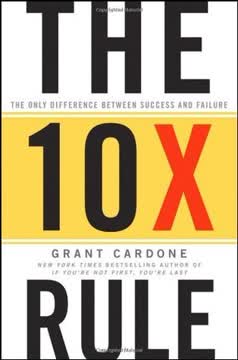

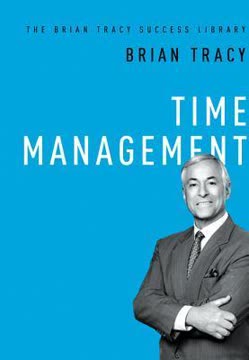

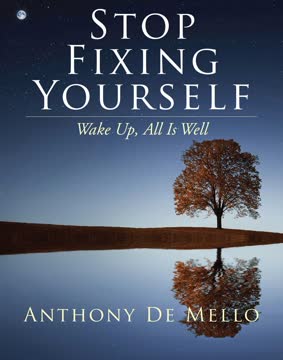
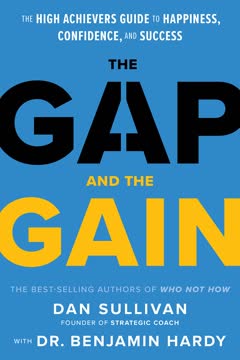
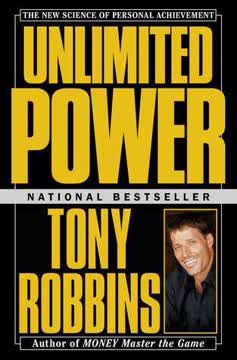
Download PDF
Download EPUB
.epub digital book format is ideal for reading ebooks on phones, tablets, and e-readers.
